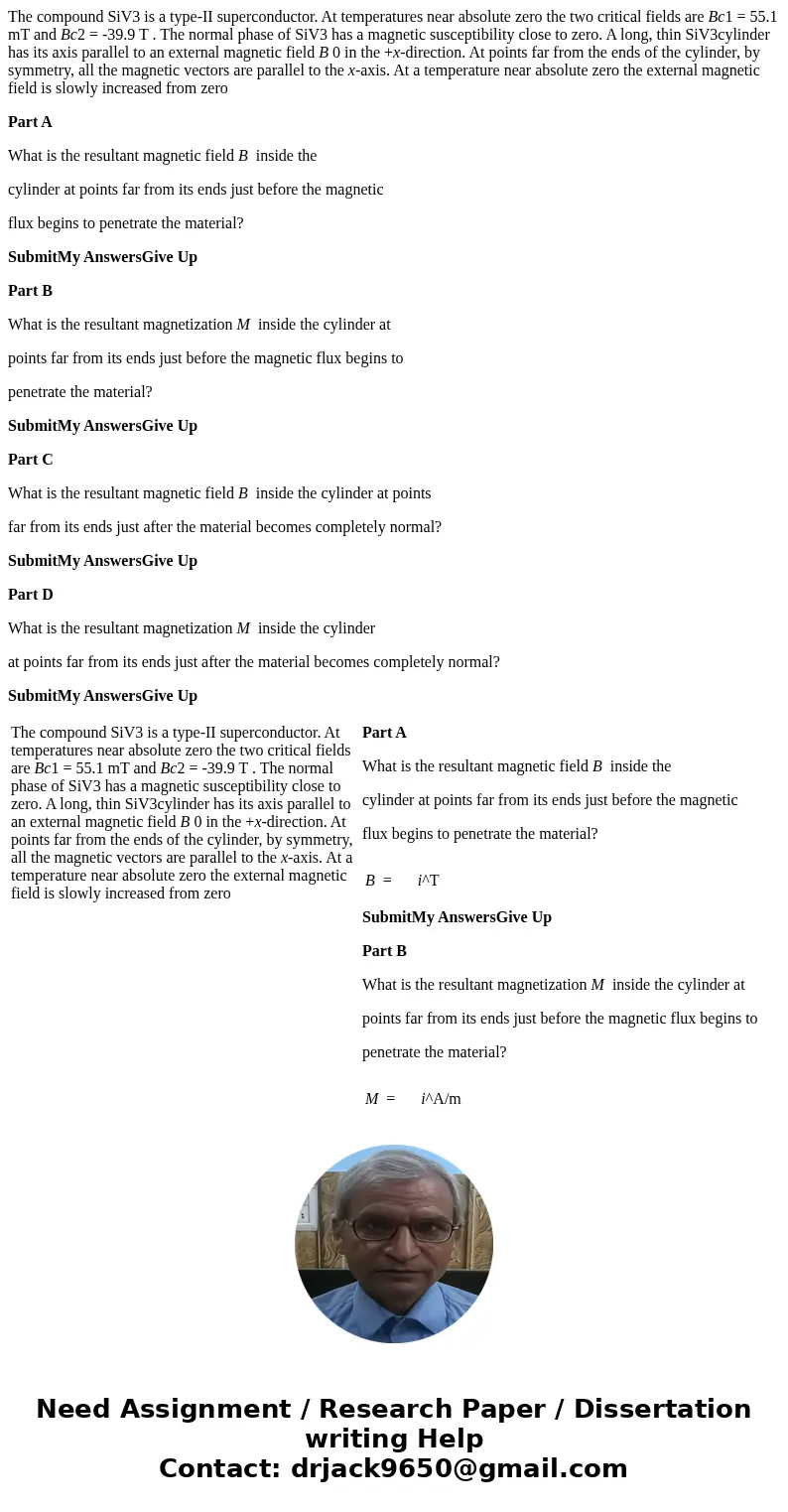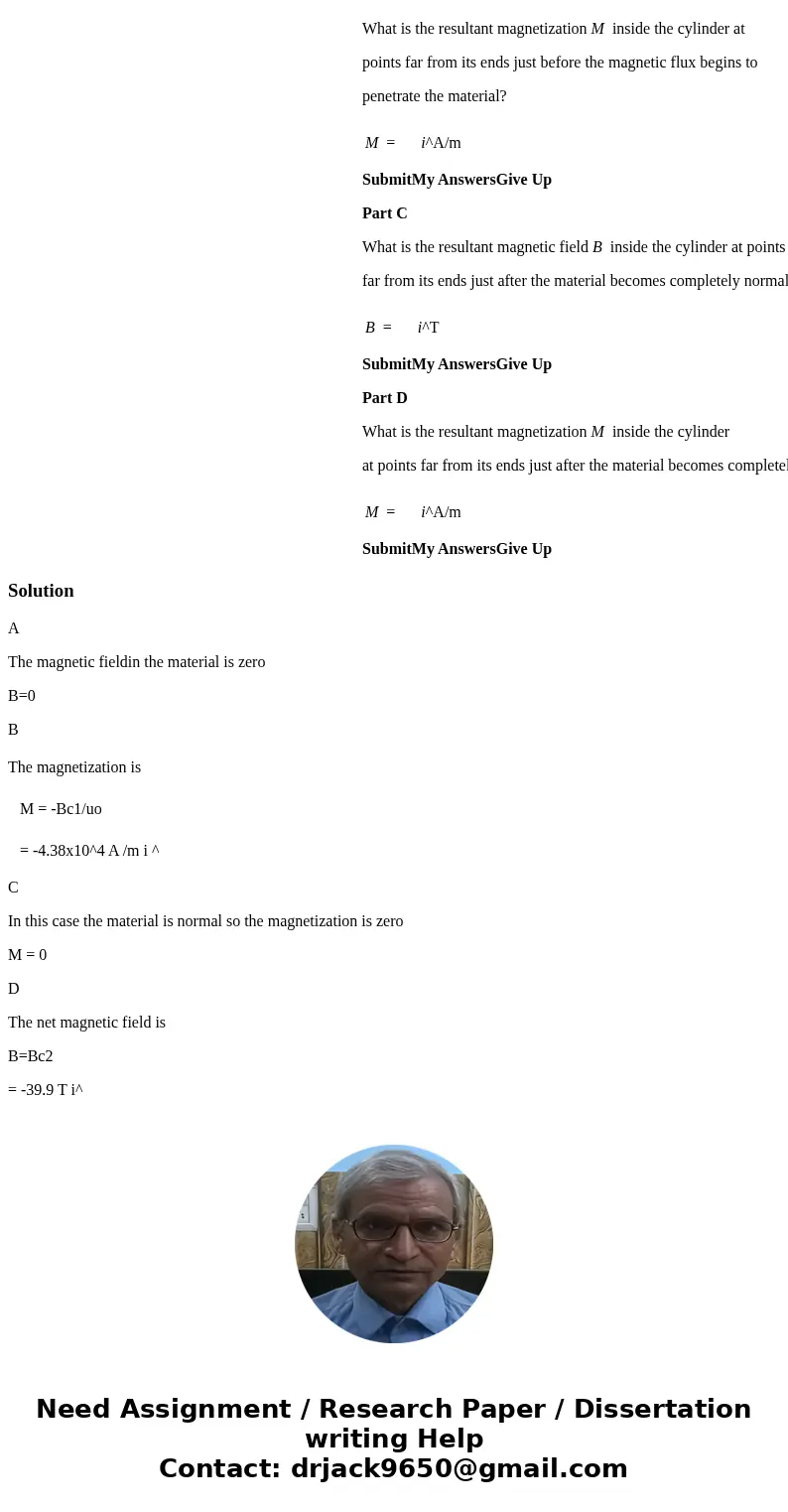The compound SiV3 is a typeII superconductor At temperatures
The compound SiV3 is a type-II superconductor. At temperatures near absolute zero the two critical fields are Bc1 = 55.1 mT and Bc2 = -39.9 T . The normal phase of SiV3 has a magnetic susceptibility close to zero. A long, thin SiV3cylinder has its axis parallel to an external magnetic field B 0 in the +x-direction. At points far from the ends of the cylinder, by symmetry, all the magnetic vectors are parallel to the x-axis. At a temperature near absolute zero the external magnetic field is slowly increased from zero
Part A
What is the resultant magnetic field B inside the
cylinder at points far from its ends just before the magnetic
flux begins to penetrate the material?
SubmitMy AnswersGive Up
Part B
What is the resultant magnetization M inside the cylinder at
points far from its ends just before the magnetic flux begins to
penetrate the material?
SubmitMy AnswersGive Up
Part C
What is the resultant magnetic field B inside the cylinder at points
far from its ends just after the material becomes completely normal?
SubmitMy AnswersGive Up
Part D
What is the resultant magnetization M inside the cylinder
at points far from its ends just after the material becomes completely normal?
SubmitMy AnswersGive Up
| The compound SiV3 is a type-II superconductor. At temperatures near absolute zero the two critical fields are Bc1 = 55.1 mT and Bc2 = -39.9 T . The normal phase of SiV3 has a magnetic susceptibility close to zero. A long, thin SiV3cylinder has its axis parallel to an external magnetic field B 0 in the +x-direction. At points far from the ends of the cylinder, by symmetry, all the magnetic vectors are parallel to the x-axis. At a temperature near absolute zero the external magnetic field is slowly increased from zero | Part A What is the resultant magnetic field B inside the cylinder at points far from its ends just before the magnetic flux begins to penetrate the material?
SubmitMy AnswersGive Up Part B What is the resultant magnetization M inside the cylinder at points far from its ends just before the magnetic flux begins to penetrate the material?
SubmitMy AnswersGive Up Part C What is the resultant magnetic field B inside the cylinder at points far from its ends just after the material becomes completely normal?
SubmitMy AnswersGive Up Part D What is the resultant magnetization M inside the cylinder at points far from its ends just after the material becomes completely normal?
SubmitMy AnswersGive Up |
Solution
A
The magnetic fieldin the material is zero
B=0
B
The magnetization is
M = -Bc1/uo
= -4.38x10^4 A /m i ^
C
In this case the material is normal so the magnetization is zero
M = 0
D
The net magnetic field is
B=Bc2
= -39.9 T i^


 Homework Sourse
Homework Sourse